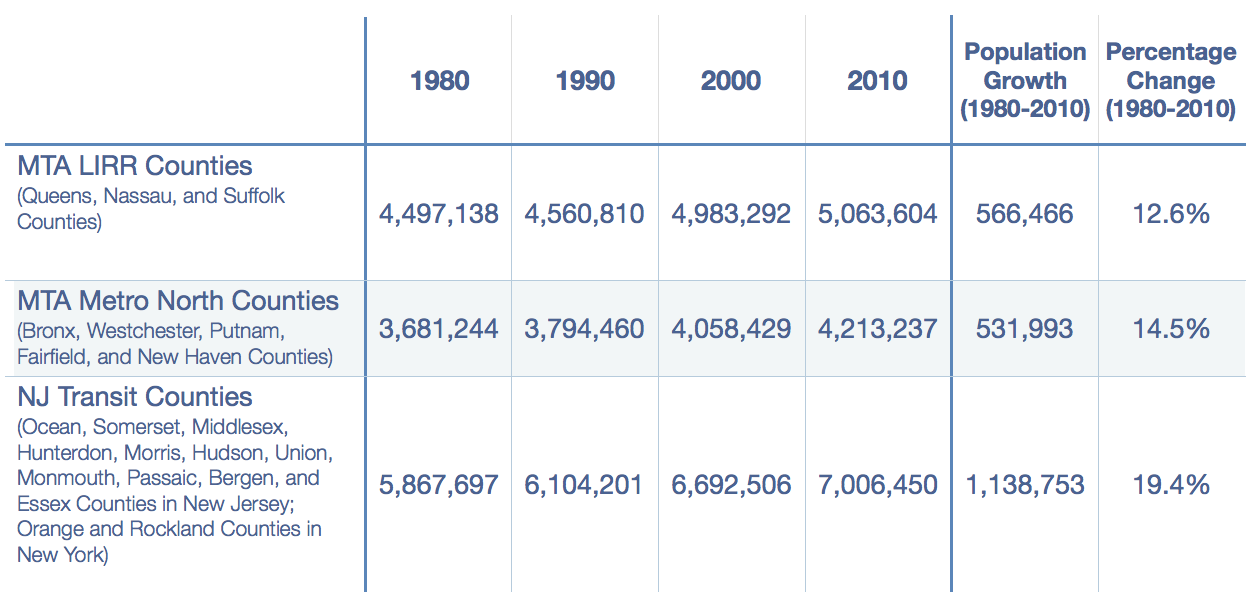Table of Contents
Download Planning for a New Northeast Corridor:

Download The Hudson Terminal Plan:

Download the Trends & Opportunities Report:

Changes in Metropolitan Population Growth
Resident Population by Primary Commuter Rail System
Over the past ten years, changes in regional ridership have not necessarily corresponded to changes in resident population within the counties utilizing each of the three respective regional transit systems. For instance, Queens, Nassau, and Suffolk counties grew by over 80,000 people or 1.6% from 2000 to 2010, yet MTA LIRR annual ridership decreased by 3.2 million passengers, or 3.8%, during the same period of time. This disparity is even greater when comparing 30-year population growth within the various rail systems, with both MTA Metro-North and NJ Transit annual rail ridership growing at higher rates than the respective 30-year population growth within the counties they serve. This trend demonstrates that the growth in transit ridership throughout different segments of the metropolitan region is a result of more than just mere population growth, but rather because of either expanded service options or changes in the way people choose to travel around the metropolitan region.
Looking toward the future, it is important to recognize which transit sectors will likely continue to grow at the fastest rates. From 1980 to 2010, NJ Transit counties grew by 19.4% compared with 14.5% for Metro-North counties and 12.6% for LIRR counties. This includes a net growth of over 1,000,000 residents in NJ Transit counties compared to approximately 550,000 residents in both Metro-North and LIRR counties. From 2000 to 2010, the comparative population growth is even more dramatic. Over those ten years, NJ Transit counties grew at over three times the rate as LIRR counties and added twice as many residents as Metro-North counties.

